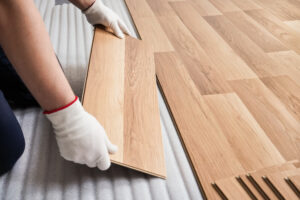- 2 min reading time
Sustainable renovation – is that even possible?
When people want to renovate, they often think about new colours, fresh floor coverings or modern furniture. But what about the environment? Sustainable renovation At first glance, this sounds like a contradiction. After all, renovating involves replacing materials, using resources and often generating waste. But with the right decisions, Renovation can also be environmentally friendly, healthy and future-oriented. – without compromising on comfort or design.
Why sustainable renovation is important
The construction and renovation industry is one of the largest CO₂ emitters worldwide. Not only new buildings, but also renovations can have an enormous impact on the environment – whether through energy-intensive production, long transport routes or materials that are difficult to recycle. This is bringing sustainable construction and living increasingly becoming the focus of attention – for architects and private individuals alike.
What is important for sustainable renovation?
- Make conscious material choices
If you want to renovate sustainably, you should consider environmentally friendly materials : i.e. as durable as possible, low-emission, recyclable and free of harmful substances. Products that are proven to be free of PVC, chlorine and plasticisers are ideal. - Prefer regional products
Short transport routes are good for the climate. Therefore, look for materials that Manufactured in Europe or ideally in Germany were produced using recycled materials wherever possible. - Maintain existing stock instead of replacing it
Sometimes, clever planning and high-quality refurbishment can even make demolition and replacement unnecessary. Preserving existing floors with particularly thin coverings is also an option. Sustainable alternative for renovations. - Thinking about a healthy living environment
Many conventional materials emit harmful substances over many years. Healthy building materials contribute to a better indoor climate – and protect particularly sensitive people such as children or allergy sufferers. - Consider energy efficiency
Sustainability does not begin with the materials, but also with long-term use. Improved insulation, energy-saving windows or the integration of underfloor heating can significantly reduce energy consumption. Energy efficiency in your home improve permanently.
CERAMIN® – the floor covering for sustainable renovation
CERAMIN is a particularly good example of sustainable materials for renovation. This high-quality designer flooring is free from PVC, chlorine and plasticisers, consists largely of recycled material and is produced in Germany using renewable energy. Thanks to its low installation height, it is ideal for renovations – even where existing floor coverings are to be retained. And best of all, it is robust, waterproof, healthy for living and 100% recyclable. CERAMIN thus demonstrates that sustainable renovation is not only possible, but also stylish and future-proof.




